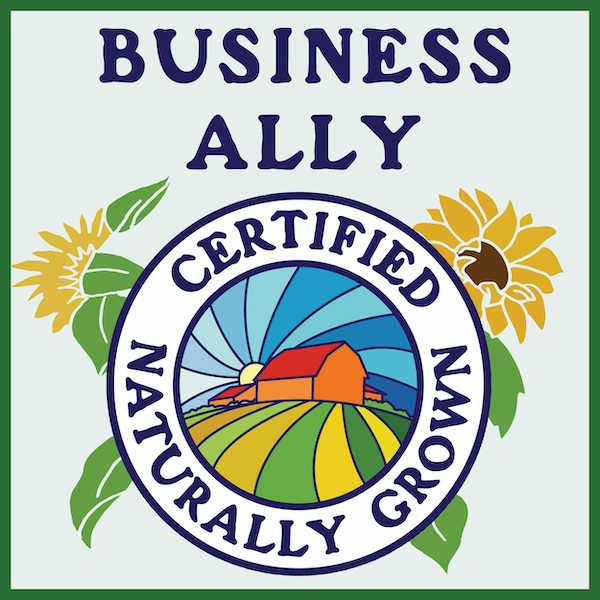Articles written by Earth Tools owner, Joel Dufour
Appeared in Mother Earth News: Haymaking Tools for the Small Farm
Appeared in Hobby Farms magazine No tractor, no problem!
Appeared in Natural Horse magazine: What the Hay?
Appeared in Mother Earth News: Best Tools for Big Gardens
Appeared on Rethink Rural / Raydient Places website: An introduction to Walk-Behind Tractors for small acreage (not written by Joel, but the article is an interview with Joel)
Appeared in Mother Earth News: Everyday Solar Cooking (not about walk-behind tractors or farming, but food-related!)
Articles about Earth Tools
Appeared in Sweet Owen magazine: Owen County’s Best-kept Secret
Appeared in The State Journal (Frankfort, KY newspaper): Tools for Small Farms turn into Big Business
Appeared in the Louisville Courier-Journal (Louisville, KY newspaper): Must-Have Garden Tools
BOOK REVIEW: “The Two-Wheeled Tractor Handbook” By Zach Loeks (published April 2023)
NOTE: We have never done a “book review” before, but since this book relates directly to to the products that we represent, I just had to give it a read and let folks know what I thought of it. - Joel Dufour, Earth Tools owner
This is a well-written book, and it is long overdue to have a book dedicated to these amazing little machines. It has lots of great information about walk-behind tractors and their applications, with in-depth descriptions and diagrams of different farming systems that can utilize walk-being tractors to maximize efficiency. The author actually owns the equipment and uses it on his farm, so he can give real-life how-to examples and share his experiences. The author even covers many maintenance procedures, which is a real bonus and will help equipment owners get the most out of their investment.
The only thing I find lacking in this good work is that for whatever reason, the author chose to ignore all current walk-behind tractors other than BCS (there are a couple of pictures of Ferrari walking tractors, but since Ferrari tractor is owned by BCS and the current Ferrari walking tractors are simply re-badged BCS machines, I do not consider this a separate brand). Also omitted are most of the implements that are not offered by BCS America (the North American importer of the Italian brand BCS). These omissions go so far as to not even acknowledge, by and large, that there are other two-wheel tractors currently produced in Europe besides BCS. The author DOES mention other historical American walking tractors (such as Gravely and Planet Junior), and plenty of other parts of the book show that the author is a well-researched sort of guy, so I’m a bit mystified as to these omissions. (Oh, there is one mention I found of the Grillo brand walking tractors, in the “engine” section. Sort of odd that Grillo, a 70-year-old Italian brand with North American distribution for nearly 20 years, would get a cursory mention only in regards to the engines that power it [which is not even accurate in North American context], when Grillo is completely ignored in the rest of the book…)
A tractor (two-wheel or 4-wheel) is useless by itself; its usefulness is dictated by the implements that are powered by it and enable it to perform different types of work. In omitting information on the full range of available implements, the author somewhat “sells short” the capabilities of the two-wheel tractor (excluded examples are straw chopping/blowing, stump grinding, mini-trenching, crimper-rolling, vacuum-seeding, electrical power generation, etc. [A Hay-baler gets a cursory mention, but is not included in the “selected enterprise example” relating to grassland])
The other gripe I have with this book is that it very much recommends the BCS model 739 as an adequate machine for the average Market-Gardener. We beg to differ… We have sold machines to literally THOUSANDS of market gardeners over the last 30+ years, and the general consensus is that the 739 (and the 732, which has the same size frame as the 739) are too small for the full range of tasks / implements required for market gardening. The lack of independent “steering” brakes, the shorter handlebars (which rob the user of the leverage necessary to handle “heavier” implements easily), and the smaller standard wheels all contribute to the inadequacy of this model for the average market gardener or commercial farmer. On top of that, the handlebar column is made of much weaker material than it is on the 749 / 853 series tractors, and we have seen numerous cases where handling heavy market-gardening implements (such as the flail mower or power harrow) causes the column to fail prematurely from stress.
I will let the reader hypothesize as to the motivation behind this omission of valuable information in an otherwise well-researched and useful book. Note added May 2024: We now have more clarity on the “omissions” mentioned above…We have it on good authority that Mr. Loeks was actually contracted by BCS America to write his book. So it is virtually 100% a “BCS-America-approved Adversitement”. The omissions make a lot more sense in this light! And: Regarding that the author seems to “recommend” the BCS model 739: We suspect that BCS America “donated” this model to the author…this is just a theory, but it would explain the author’s “lean” toward this model. But in total: It is a valuable work, full of useful information, and it adds to the body of published material regarding a highly practical equipment sector that most Americans are woefully uneducated about. (And good news: If you’re reading this, you’ve already found our website, which fills in the “blanks” in Mr. Loek’s book with a complete and “non-brand-specific” offering of walk-behind tractors and implements!)










